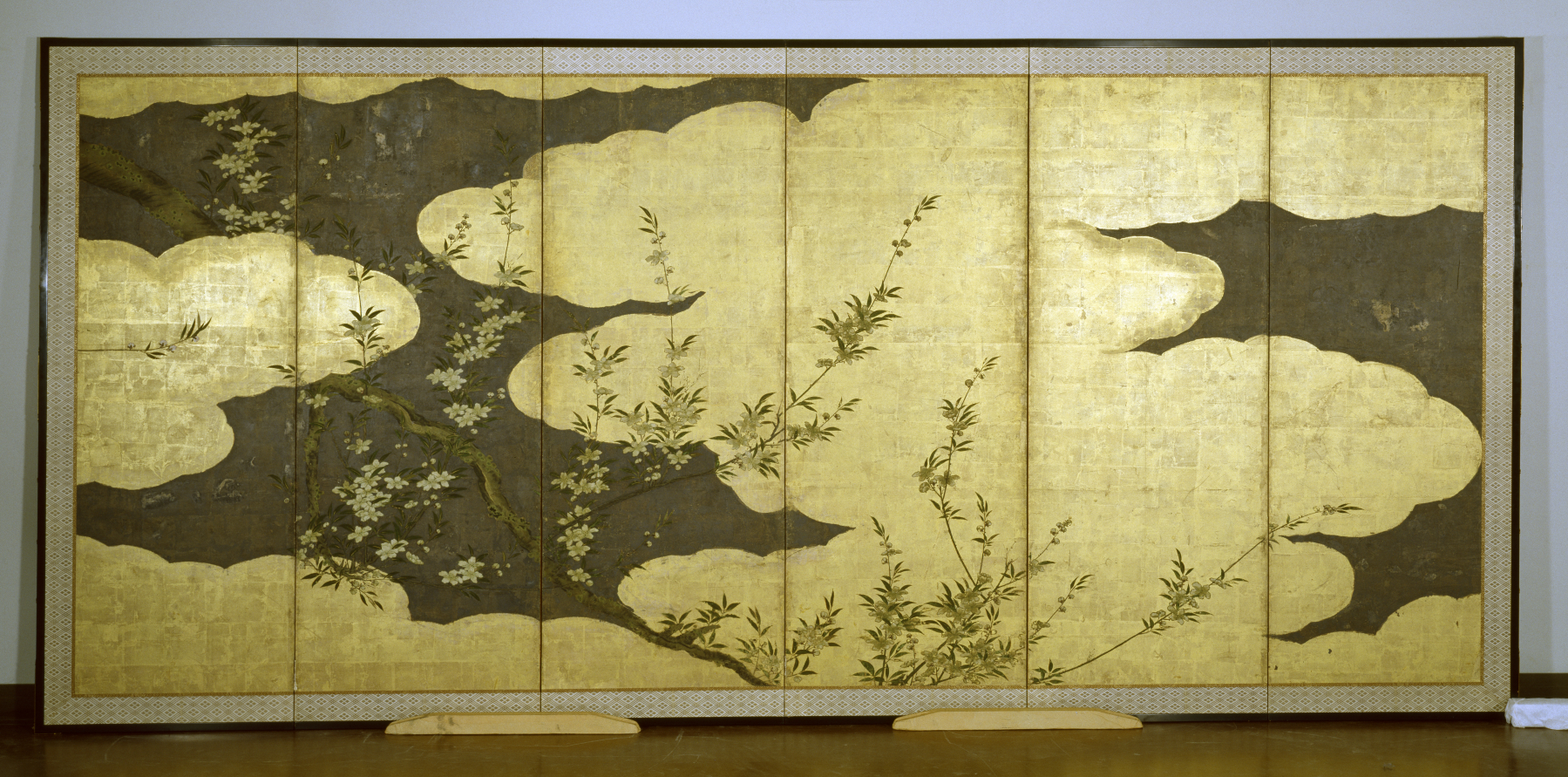Blossoming Cherry Trees
(Japan and Korea )
Cherry blossoms appear on this pair of Japanese folding screens (35.113 and 35.114). Gold-leaf clouds partly cover and partly reveal the trunks and branches of three ancient cherry trees. Cherry blossoms in Japan represent a celebration of life’s ephemerality and acceptance of nature’s ebb and flow, underlying the Japanese concept of mono no aware, a sensibility that acknowledges both the joy and sorrow that come with the fleeting nature of beauty and, ultimately, of life itself. The brief cherry blossom season, which lasts only about a week, is celebrated every spring in Japan with cherry-blossom viewing in public parks.
Folding screens made rooms-within-rooms in the large spaces of 17th-century elite homes. And with large amounts of gold leaf, imagine the screens reflecting the changing sunlight throughout the day and flickering candlelight at night.
Provenance
Provenance (from the French provenir, 'to come from/forth') is the chronology of the ownership, custody, or location of a historical object. Learn more about provenance at the Walters.
Mathias Komor, New York [date and mode of acquisition unknown]; Walters Art Museum, 1973, by purchase.
Exhibitions
| 2014 | Designed for Flowers: Contemporary Japanese Ceramics. The Walters Art Museum, Baltimore. |
Geographies
Japan (Place of Origin)
Measurements
H: 69 × W: 147 3/8 in. (175.26 × 374.33 cm); H open with proper spread: 69 × W: 109 in. (175.26 × 276.86 cm); H of each of two outer panels: 69 × W: 25 3/16 in. (175.26 × 63.98 cm); H of each of four inner panels: 69 × W: 24 1/4 in. (175.26 × 61.6 cm)
Credit Line
Museum purchase, 1973
Location in Museum
Not on view
Accession Number
In libraries, galleries, museums, and archives, an accession number is a unique identifier assigned to each object in the collection.
In libraries, galleries, museums, and archives, an accession number is a unique identifier assigned to each object in the collection.
35.114



